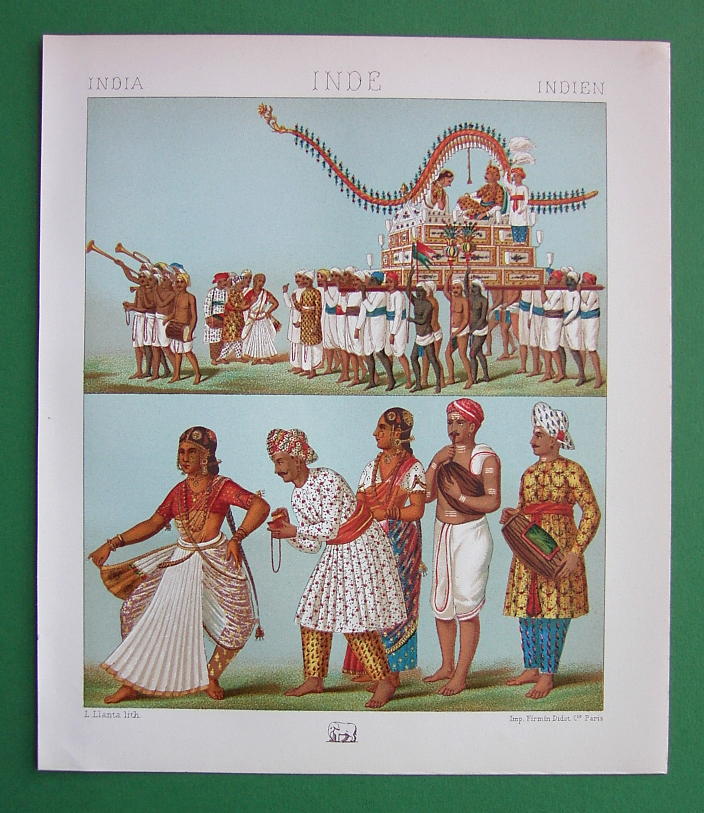

Weddings (1888)
Source: ebay, Nov. 2005
"INDIAN WEDDINGS CAN LAST FOR ANYTHING from two to 30 days. Children of the relatives and friends of the happy couple - who are carried in a litter - lead off the wedding procession, and the adult guests follow on behind the litter. Usually the litter, which is used for all types of procession and celebrations as well as for weddings, consists of a light bed or sofa surmounted by an arched bamboo pole that has been carved with likenesses of real or mythological animals.
Legend: In 1, though, the litter is a chaupal, one of the most
ancient types. It is decorated with flowers and has lanterns round its
base. This chaupal is almost identical to the jailedar, the type of litter
used by Rajahs, except that the latter also has an embroidered awning as
protection against the sun. Servants are carrying the litter, and next
to them stand more servants: two bearing pots of flowers on the ends of
poles; two carrying small standards that display the households' colors;
and others carrying supplies of the indispensable betel leaf. Musicians
are playing trumpets, tambourines and oboes. 2 A canceni dancer, with four
accompanying musicians. There are three classes of dancer in India: the
devadases, who only perform at religious ceremonies; the Sachs, who dance
at some ceremonies but are not allowed to enter the temple; and the cancenis.
The latter are found at all Indian parties and festivals, and in most rich
households. They perform erotic dances that tread a fine line between art
and indecency. The dancer's costume is nearly identical to that ascribed
to Latchimi, the wife of Vishnu and goddess of beauty. Her black hair,
shiny from coconut oil, is swept back over her forehead, to end in a single
plait. The earrings, nose-ring, collars, ankle-bracelets and half-brassiore
also recall the goddess. Like most cancenis, this dancer is an adherent
of Vishnu, as can be seen from the mark on her forehead."